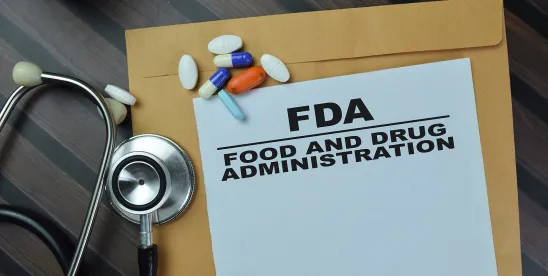Last Monday, the U.S. District Court for the Eastern District of Texas (the “District Court”) issued a highly anticipated – and unsurprising – opinion invalidating the U.S. Food & Drug Administration’s (“FDA’s” or the “Agency’s”) controversial rule that ended its longstanding policy of enforcement discretion for laboratory-developed tests, or “LDTs,” purporting to regulate them as “devices” under the Food, Drug, and Cosmetics Act (the “FDCA”) (the “LDT Rule” or the “Rule”). While this is a clear win for companies in the diagnostic and lab services space, we are now left wondering – is there any path forward for the LDT Rule? It’s not looking too likely but, these days, anything could happen.
A. The Opinion
The ruling in this case, which is a consolidation of two cases brought by the American Clinical Laboratory Association (the “ACLA”) and the Association for Molecular Pathology (the “AMP”) (collectively, the “Plaintiffs”),[1] granted the Plaintiffs’ motion for summary judgment to vacate and set aside the LDT Rule in its entirety. Although the Fifth Circuit, in which the District Court sits, is infamous for challenging agency actions, deciding the case on summary judgment is a relatively big deal, as it requires the moving party to demonstrate that there is no genuine dispute of material fact and that judgment is warranted as a matter of law – in other words, it has to be a pretty “open and shut” case. Here, the District Court overturned the Rule on the basis that FDA lacks the statutory authority to regulate LDTs, as LDTs do not qualify as “devices” under the FDCA, and LDTs should instead be regulated by the Centers for Medicare & Medicaid Services (“CMS”) under authority granted by the Clinical Laboratory Improvement Amendments (“CLIA”).
B. Looking Forward
Now that the LDT Rule has been vacated, it can only be revived judicially if FDA appeals it to the Fifth Circuit. This seems unlikely. The former Trump administration addressed the LDT issue directly when it issued a legal opinion explicitly stating that the FDCA does not give FDA the authority regulate LDTs, and the current Trump administration is purportedly acting on a generally pro-industry, de-regulation platform. Further, recently-confirmed Health and Human Services (“HHS”) Secretary, Robert F. Kennedy, Jr. (“RFK Jr.”) has a touted a laundry list of other proprieties for FDA, including food safety, vaccines, selective serotonin reuptake inhibitors (“SSRIs”), and rare disease treatments, to name a few – not to mention the fact that FDA’s workforce has recently been gutted – so the Agency likely cannot spend its now-precious resources to salvage the LDT Rule.
To be sure, the Agency surprised us in February when it vigorously defended the LDT Rule in oral arguments – using the rhetoric championed by the Biden-era administration that issued the Rule – when the general consensus predicted that FDA would change its position to align with the Plaintiffs. Further, recently-confirmed FDA Commissioner, Marty Makary, has been vocal about the need for greater oversight to ensure safety and efficacy/effectiveness for life sciences products, which aligns with the rationale presented in the preamble to the LDT Rule, emphasizing the need for increased regulation of LDTs. Thus, while the cards are certainly stacked against the survival of the LDT Rule, there is a world in which an FDA appeal could keep it alive (for a while at least).
If the LDT Rule remains vacated, it could ultimately have positive impacts on the diagnostic space, which – as heralded by the Plaintiffs – include increased access of critical tests for patients, lower costs due steady supply, and increased innovation, especially by small and rural laboratories and for specialized and rare diseases, due to a lower bar to market entry. However, as argued by supporters of the LDT Rule and extensively presented in the preamble to the Rule itself, patient safety is a serious concern when it comes to modern-day LDTs and, without the framework for regulatory oversight that would have gone into effect next month under the LDT Rule, an issue that remains unaddressed. Now that authority for ensuring LDT safety has been stripped from FDA, lawmakers in other part of the government will need to get creative about how to address the issue, if at all – perhaps Congress will step in and pass a reworked version of the Verifying Accurate Leading-edge IVCT Development (“VALID”) Act, or CMS will take on the cause under its CLIA policies. For now, at least, companies in the diagnostic and lab services space can hold onto the status quo of unregulated LDT development and use.
Depending on how things play out, this may be the last installment in our short-lived LDT Series. However, if any further developments occur, we’ll be sure to provide an update.
FOOTNOTES
[1] We covered these cases in detail in the previous installment of our LDT Series.




 />i
/>i

